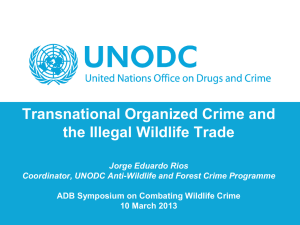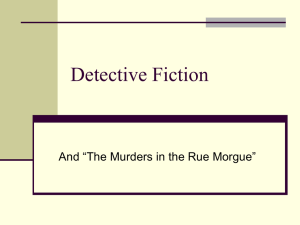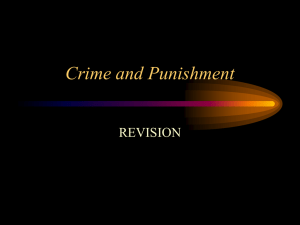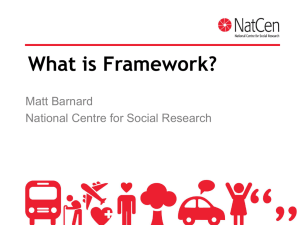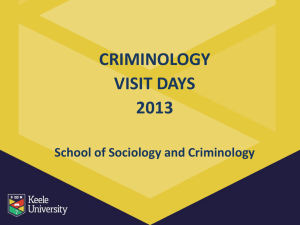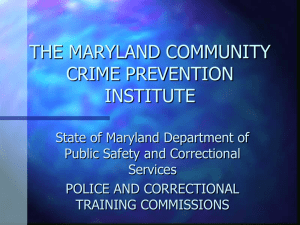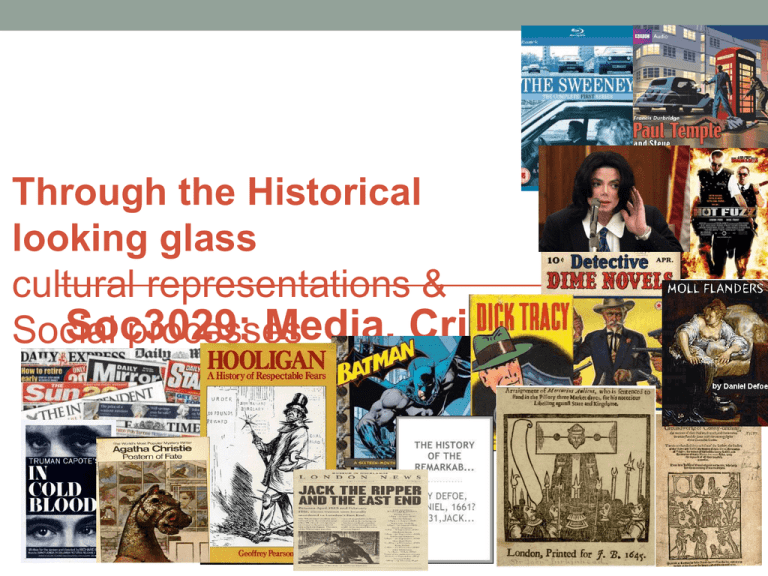
Through the Historical
looking glass
cultural representations &
Soc3029:
Media, Crime &
Social
processes
Justice
Introduction
• Contemporary media
interest in crime and
justice is a modern
phenomenon but has
origins in the past
• Structured along two
dimensions:
• Print, sound, visual &
new media
Encoding/Decoding Model
- Stuart
Hall (1973)
Gramsci
– Hegemony
i.e. dominant ideology
Althusser – Interpellation i.e. assimilated self
Feedback & Filters
Producer
Sender
Message
Medium
Encoded
Third Way A holistic model of
communication that
suggests an active
negotiating audience
Message
Decoded
Noise
Audience
Receiver
Early Modern News
• Oral tradition dominated the past
• https://www.youtube.com/watch?v=0UkXf9kckuk
• 1450 – Western Europe print revolution
• Early crime literature emerged
• Tudor to Victorian England
• Modern vs. Traditional
Victorian Era
•
The Pauper/Penny Press
•
Expanded to become the key /major source of
media/information in the 19thC/20thC
•
Independent press free from the legal &
financial control governments
•
The first medium to generate a mass market
•
Targeted a growing mass of semiliterate
urbanites with their human-interest stories
•
Portrayed individual crime as the result of class
The brutal murder of New York
prostitute
Helen
Jewett
in
1836
• Violently slashed to death &
her brothel room set on fire
• a classic ‘who-done-it’
• ‘inaugurated a sex-and-
death sensationalism in
news reporting’
• Suitor found not guilty after
http://www.scribd.com/doc/94014521/The-Murder-of-Helen-Jewett
Jack the Ripper:
• The most (in)famous Victorian crime
(i.e. serial killer)
• Newspapers highlighted the public’s
alarm – sensationalism
• Speed of communication increased
• Allowed for the unfolding of a crime
story to be developed
• Effected policy = stricter control over
medical profession & welfare reform
Detective and Crime Thrillers
•The rise of the crime
novel – evolved
from earlier forms
•Represents a
historical shift from
arbitrary punishment
to rule of law
•
•
Hard Boiled Detective
Fiction,
Most popular 19thC US print media
Magazines and “dime”
novels
Public
concern & attack
• Bleak & cynical
• Wealth, power & status are key elements in the
context of the city
• The competent, ‘heroic’ & rule bending detective
Comic Books
• First appeared in the 1930s
• Marketed to both children and adults
• Socially influential
• Feature crime-fighters
• Construct sophisticated images and
analyses of crime and justice
• Public concern & attack
Academic Texts
• Historical/critical examination of
popular media representation of
street crime & delinquency over
the last 200
• Consistently view criminality in
modern society as a new or unique
problem
• A criminal present is always
contrasted with a safer past
Pearson (1983)
‘A History of Respectable Fear
Journals - 1945-1990s - Reiner
(2003)
• Both news (factual) & entertainment (fictional) crime
stories are prominent in all media
• These stories overwhelmingly focus on serious violent
crime, especially murder
• Offenders and victims in these stories are of higher
status and older than actual offenders and victims
Radio
•
Dominated as the 1920s/40s home
entertainment and information medium
•
Pure audio media
•
Delivering information in a linear fashion akin
to print while evoking mental images and
emotions analogous to visuals
•
Portrayals of criminality could only be heard,
not seen
Film
• Provided the first modern
mass/popular media
• Rapidly came to reflect &
shape Western culture
• Directly reach individuals
with information & images
• Dominant themes have been
identified with certain
periods
• Increasingly more punitive
TV
• Became dominant medium post
WW2
• Combined characteristics of both film
and radio to quickly become the
dominant media
• Audiences embraced television
• Helped create a new & different
society
new digital
interactive
media
• Specialised crime & justice products
• Exemplified by the Internet,
electronic games & PDAs
• Target small homogenous
audiences that have a special
interest in a narrow type of content
• Delivery of content is controlled and
determined to a much greater
degree by the consumer
Types of Content
• Entertainment =
escapism?
• Advertising = big
business
• News = true, current, and
objective information
about significant world
events?
BUT...what about Media/Crime relation as event-making...and where does
Justice fit in?
A crime occurs...but for 'this' crime to be news-worthy, in some way it has
to have significance as:
Identifiable
Easily reportable i.e. not complex banking and fraud cases which is
related to perceptions of target audience – basically are they bright
enough to get it?
Categorisable against a tariff of significance (for audience)
Has extra features which in themselves may not be criminal e.g. sex,
the blonde, the accomplice, a dark past...which somehow appears to
explain the event such that the audience can say “oh well..stands to
Reason...” matching models of the crime-structure/popular explanation
Between reporters and audience.
BUT...what about Media/Crime relation as event-making...and where does
Justice fit in?
A crime occurs...but for 'this' crime to be news-worthy, in some way it has
to have significance as:
Identifiable
Easily reportable i.e. not complex banking and fraud cases which is
related to perceptions of target audience – basically are they bright
enough to get it?
Categorisable against a tariff of significance (for audience)
Has extra features which in themselves may not be criminal e.g. sex,
the blonde, the accomplice, a dark past...which somehow appears to
explain the event such that the audience can say “oh well..stands to
Reason...” matching models of the crime-structure/popular explanation
Between reporters and audience.
The need to adapt to lay explanation as key to communicating in an
anticipatable way...thus obliging audience to read on
And awaiting the next instalment in tomorrow's 'Soar away Sun'
And this helps to generate readers = profits
Event-alisation as good encoding for;
a) exciting/engaging the audience
b) as generating hits =new readers/maintaining existing ones (churn rate)
c) to keep profits flowing (capitalism – the political-economy approach to
media analysis.
(Drop the dead Donkey s4, ep 7) @ 2'.48”; 6'; 7'40”; 11'.23”; 19'40”
But 'reported crime event' as a 'bundling of process' – if is a good crime
e.g. 'orrible murder with sex and money (@10'.40'') -the reporting takes time in re
establishing the scene and the detection process by police et al.
But that can get boring for audience unless new aspects – new events can be
'constructed' – i.e. reporting a lead which is titillating, even better another murder
(recent and tragic Alice Gross story were likely suspect had in past and in another
(old eastern European country where weirdness must happen – vampires etc)
murdered his wife.
The wages of Sin – Fatty Arbuckle's last days
And the suspect made the story neat by killing himself...which is almost s good
as another murder
And produces justice in relation to a short news cycle...rather than a long
drawn out trial which must be covered but cost in terms of time and journalists
Bit if there is a trial – the justice bit – and the case is big enough it may have to
be reported rather like a Hollywood court-room drama which of course is a very
coded narrative
Judge – ponderous/serious even comic e.g. the famous Peter Cook attack on the
Judge at the Jeremey Thorpe trial
prosecution mean and forensic
defence- keen and persuasive
Jury – shocked by; surprised by, upset by....
And the witnesses and other evidence sources – need for dramatic evidence
“on which the trial could well turn...” (think of the twists and turns of the
Oscar Pistorius trial) – opens up a structural analysis of diacritical positioning.
And of course the verdict as dramatic – “he was sent down for...”
But some crimes are iconic: Whitechapel murders; Great Train Robbery 63;
Yorkshire Ripper; Dennis Neilsen; http://en.wikipedia.org/wiki/Moors_murders
Moors Murders 63-66...and make eternal heroes and villains and so becomes a
Conclusion
• Crime & Justice – Mediated Experience
• Our mass media is an electronic, visually dominated media
• The current marketing structure of the media is geared toward
narrowcasting, or targeting smaller, more homogenous
audiences than were previously the focus
• The media must be understood as a collection of for-profit
businesses





